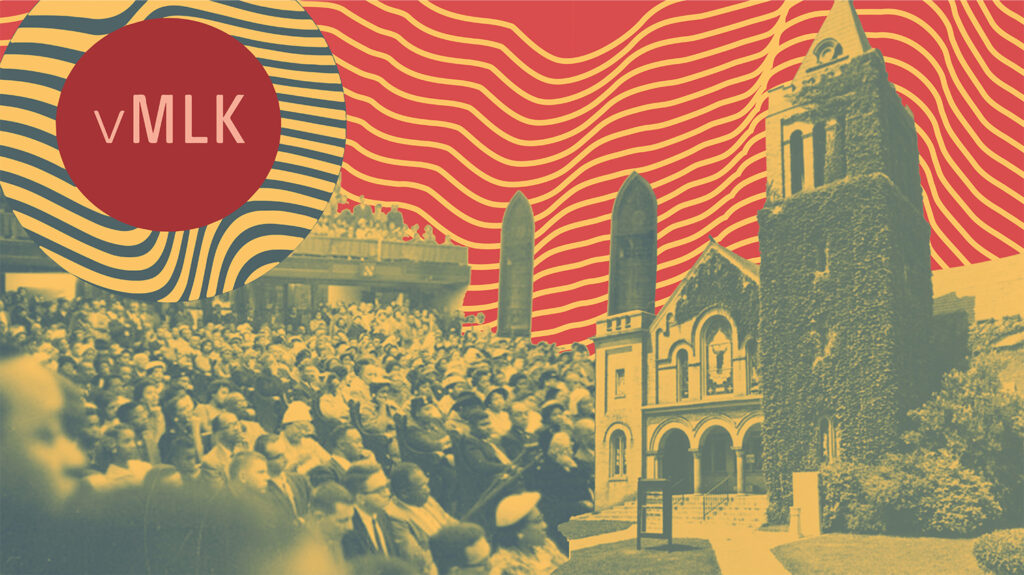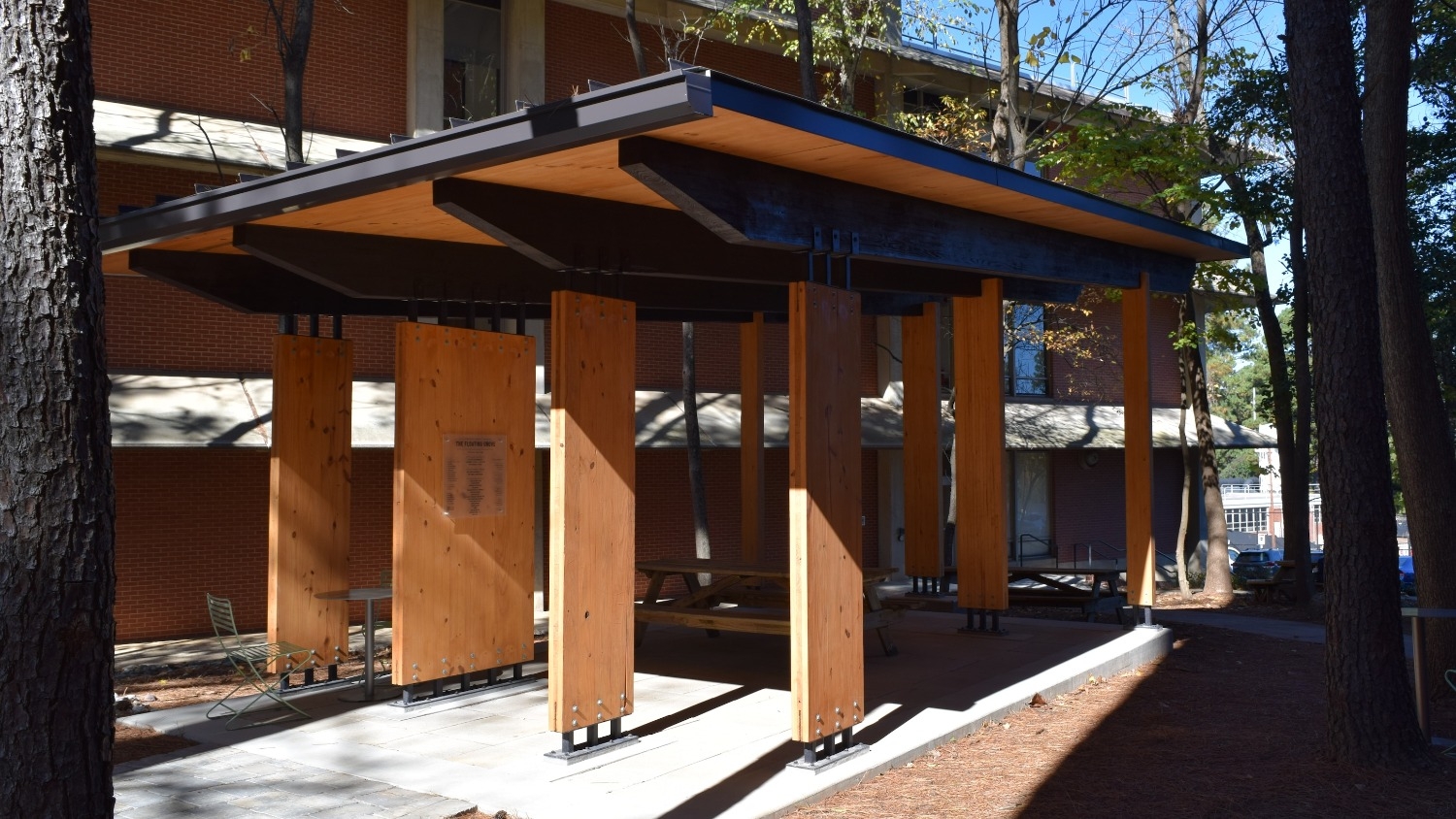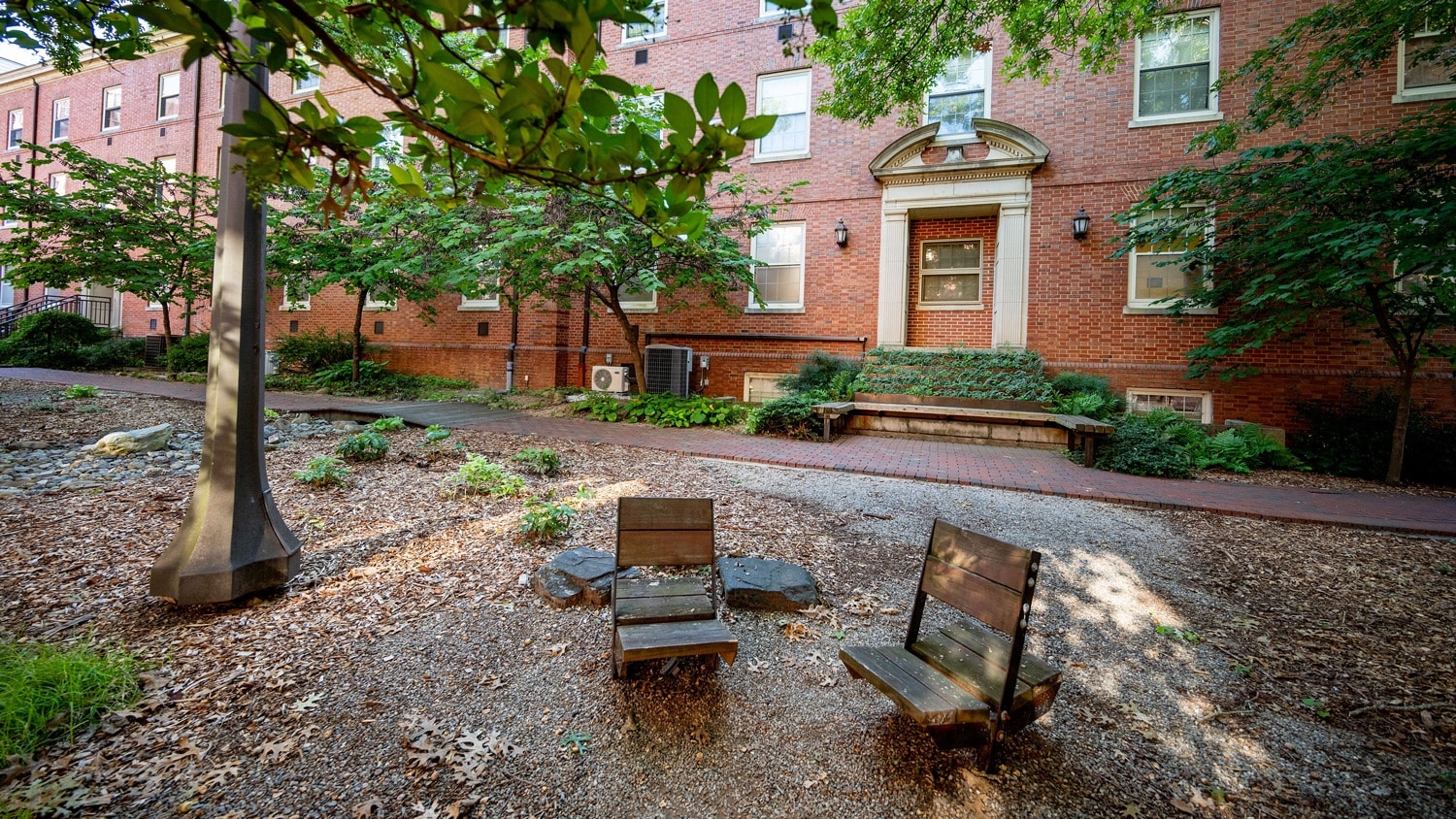Switching Back the Code: A Q&A with Jemima Liteli

Jemima Liteli is a junior studying graphic design at NC State.
Attending predominantly white institutions (PWIs) for the majority of her life has caused her to feel the otherness, isolation and disconnection that other BIPOC students often feel.
When she first came to the College of Design, Jemima found it hard to break the habits of assimilation she developed over the years. She credits the community she found at NC State for her growth and empowerment as an activist and a designer.
In June of 2020, she used that empowerment to start a petition which resulted in gaining over 25,000 signatures and the eventual removal of a Confederate monument in downtown Raleigh.
We spoke with Jemima about what it means to become her “true self” as a Black student and activist.

How did you get introduced to design?
I was born in the Democratic Republic of Congo (DRC), and we came to America when I was three years old.
Being first generation, family of immigrants – it’s hard because the expectation is that you become a lawyer, a doctor, an engineer. That was the expectation that was set for me, but I was always super creative. When I was young, I sang, I played with Legos, I just did everything that stimulated me visually – I was a visual learner.
From a young age, because of those expectations, I wanted to be a doctor. Not because I was really interested in the science, but I was more interested in experiencing different people and being exposed to different cultures.
By 10th grade, I quickly learned that chemistry was not for me and I needed to move on. In my senior year of high school, I got an internship at NC State University, working with Dr. Derek Ham. He was a professor in the graphic design department, but now he is head of Art + Design, which is an amazing feat. I worked with him on a VR project he was working on called “I am a Man” doing testing and research.
He showed me how communication and creative skills can be applied to real-life settings. I felt like that space was so inviting and welcoming. I’ve never seen that. I was trained into think that STEM-related fields are what real jobs look like, and to be invited back into that creative space was super inspirational.
Was the shift from a medical field to a creative one difficult? What kind of responses did you get when you changed your career intentions?
Moving from a medical path to a creative one was definitely a difficult conversation, just because my parents want the best for me. They came here from a place where opportunities are not the most prevalent, and they wanted me to pursue something that would give me the life that I wanted. They wanted me to live well.
I think what helped that conversation was the internship with Derek. He was a professional in his field and was doing amazing things. I would talk to them about what we learned, all the cool stuff that we’re doing.
And that honestly helped my case. It helped them see that there is a good future for me in design. I didn’t speak the language of doctor or engineer. I just I couldn’t. It’s not who I was. My parents slowly understood that, thankfully.
As a Black student at a PWI, what were your first impressions? Did those impressions change the more time you spent here?
I went to PWIs all of my life. My parents, they wanted me to have the best education that I could have. They understood that less wealthy neighborhoods were severely underfunded because public school funding comes from the local property taxes. If the property taxes are low, the school is not going to be adequately funded.
This experience led me to develop the habit of code switching – when you are thrust in an environment that you know you’re not familiar with, you assimilate.
In middle school and in high school I didn’t know who I was, and I didn’t know what I wanted to be. I thought to myself, “let me just be like everyone else, let me just act like everyone else.” It was honestly super damaging. I still have to train myself out of that mindset.
When I started at NC State College of Design, I saw myself starting to slip back into that habit and had to rein myself in. What that looked like for me was actively seeking out my community and actively seeking out people who look like me.
I was in architecture my freshman year and transferred into graphic design sophomore year. In architecture, I was one of two Black students in the entire class – it was baffling to me. I could not understand how, out of all the applications the college had received, how one Black woman and one Black man met the qualifications.
It just didn’t make any sense to me. I know talented people who have these skills, who look like me, and they weren’t next to me. Being a Black student at a PWI can definitely be rough. What do you do when you don’t fit in? Should I act like everyone else, or should I be myself?
“As a Black woman, I am often told, “You are too loud, you are too aggressive, you are too vocal.” I am constantly edited. I’m constantly being told to change my tone. To smile.”
What has the experience been like finding and connecting with other BIPOC students at NC State?
NC State is really good with promoting their clubs and organizations through social media. It was very easy to find groups like the Black Student Union, the African Student Union and Fusion Dance Crew.
We also have things like club fairs that sought the attention of people who are like me, who were coming out from PWIs and who longed for that cultural connection.
Connecting with those groups feels almost freeing. It feels like I’m home, it feels like I’m comfortable, like I can be unapologetically myself. It’s an amazing feeling to find a community that empowers me to be that way.
You started a group online called FTP, or For the People. How did that start, and what kind of responses have you gotten since then?
For the People started after the petition. I wanted a space where people could get updates on how the fight was going, and where they could go to find resources and information to help.
With information circulating across multiple sites, a lot of people were wondering what’s happening next – I was trying to figure out a way to really focus all of that information into one place.
For the People’s purpose is to simply be a place where people could access resources and connect. And it has developed since I first made it. Now it’s not just about Confederate statues. It’s a place to discuss any fight that we are fighting. For instance, right now we’re focusing on memorials for lynching victims – specifically, George Taylor. We’re working with communities, with churches and with legislators to figure out how we can put memorials up for these victims.
In a couple of months, it will probably be prison reform. There are going to be so many other lanes of activism that we’re going to pursue, but it’s still going to be a place where people can become educated and find the resources that they need. Whether it’s calls to action, petitions, donation links – whatever that looks like, it’s for our communities.
Let’s talk about the petition which resulted in the removal of the Confederate statues in downtown Raleigh. How did that start?
When I first made the petition, it wasn’t part of an agenda. Following the deaths of Ahmaud Arbery and George Floyd, I went to a lot of protests which would occasionally meet at the Capitol building.
And for me, it was very triggering because we were all here, meeting about injustice, meeting about the fight against police brutality. But all around us were statues that commemorated the Confederacy. Statues that commemorated this group of people who did not want to give up their slaves because they wanted to hold on to their economic status.
I didn’t understand why these statues were still up. Why is there still such a blatant symbol of oppression in our city? I wanted to fight against that.
After talking to a couple of friends I decided to start a petition to take them down. I didn’t expect it to reach as far as it did. I was expecting mostly local support – maybe Fayetteville or Wilson. But when I looked at the signatures, which are over 25,000 now, there were people from Australia, the Virgin Islands, France – just everywhere.
To me, it’s insane that people saw this, they read the posts, and they chose to fight alongside me. They identified with me and said, “let’s make a change.” And that was inspiring.
Of course, I got a lot of pushback. I got a lot of negative responses on my Instagram posts. People were asking why we would want to take down history.
I responded with a series of videos explaining what they mean to the Black community, and what the history of these statues entailed. It was a way for me to engage with my community and inform people and educate people, but also still fight for what’s right.
Going back to when you first attended the protests in Raleigh, what does that process of being triggered feel like from your perspective?
I think that feeling for me feels like being silenced – like being completely disregarded.
As a Black woman, I am often told, “You are too loud, you are too aggressive, you are too vocal.” I am constantly edited. I’m constantly being told to change my tone. To smile.
I feel like I’m also portrayed as the happy Black girl. I have been pushing hard against the assumption that being vocal means being an aggressive Black woman. I think those connotations are so negative and I want to change that.
Being at the Capitol with those monuments surrounding us – it felt like I was being silenced. It felt like no matter how loud I screamed, nobody would listen. It’s that feeling that no matter what I do, these things are still around me. It’s that feeling of hopelessness.
What kind of feedback have you gotten from people who have disagreed with you on the topic of taking down Confederate monuments?
The majority of feedback I’ve gotten has taken more of an “us versus them” tone. A lot of it has consisted of being told that we’re making a big deal out of nothing. There was also a fair amount of internet trolls.
In terms of perspectives within my circle, there were also different opinions. Some people wanted to take them down and throw them away. Others wanted to preserve them and put them somewhere where people are not constantly reminded of those messages in a public area. Those conversations were constructive.
I still have hope for humanity, and I’m still holding on to hope that we’ll be able to communicate our differing viewpoints in respectful ways.
Who were some of your role models as an activist and a designer?
Definitely my brother, Elie.
He’s a systems engineer who works for Boeing in Seattle. I’ve never met somebody who empathizes with people as much as he does.
It’s hard to take the time to slow down and actually focus on one person sometimes – to focus on how one person’s experience is not like everybody else’s. But Elie makes the effort to know people and feel what they feel. He’s able to offer comfort like it’s his superpower.
I think as an activist, I never want to speak for people. I never want to silence their voices. I want people to feel empowered. I want to give them that strength to stand up on a platform to tell their stories and share how they feel.
Elie has definitely helped me understand people and the human experience, and what it means to fight for other people. Honestly, it has helped me grow as a person, too.

In terms of design, definitely Dr. Derek Ham. He is somebody that I look up to and respect so much. The way he bridges the gap between his work as a designer and his activism – that understanding of intersectionality is so amazing to me. I got a firsthand glimpse while working with him on his VR project, “I am a Man.” Through that project, I saw him speak out against racism and give a voice to Black men in America.
It convinced me that this is the kind of designer I want to be. I want to be a designer that uses my skills to speak out for people and continue to address big societal issues.
Do you feel like current events have influenced your career plans?
I knew from fall 2019 that I wouldn’t have a traditional graphic design job. I just wouldn’t want one. I wouldn’t want to be comfortable in a homogeneous environment. I felt like I didn’t want to be surrounded by people who looked like me and thought like me and did every single thing like me.
I wanted to be in a place where I could spark a change. You can’t spark a change where everybody’s all the same. You need different people in different cultures. You need different environments and different ideologies and different thoughts to really push for change.
My career goals aren’t completely clear yet. I could work at an engineering company under the design team, at a hospital for design intervention team, or I could go into politics and use my skills there. I know that whatever my future career is, I know that I will forever be advocating and fighting for unheard groups and communities. That’s exactly what I want to do. It’s just a matter of figuring out a way to tie my skills into something that I’m passionate about.
What thoughts or advice do you have for other BIPOC students and designers based on your experiences?
I would offer the advice my mom has given me for a very long time:
“Why blend in when you were born to stand out?”
When you are born as a person of color, you have a different outlook on life. You have a different culture than the majority of people. I would tell students coming into the College of Design to embrace that – bring that culture into your work, into your life, into your design.
Don’t assimilate. Don’t code-switch. It’s easy to fall into the habit of wanting to be like everyone else, but you need to true to yourself. Be one hundred percent yourself.
Surround yourself with communities that can help you when you make mistakes and help you when you have identity crises. Those people will lift you up when you feel those emotions – when you feel like you’re doubting yourself. All those doubts are going to come. Having those people around you will remind you that you are at the college for a purpose.
Taking that purpose and unique identity into studio every day – that’s what builds a diverse community. Know that you are more than qualified to be in that room. You are supposed to be here.
- Categories:


